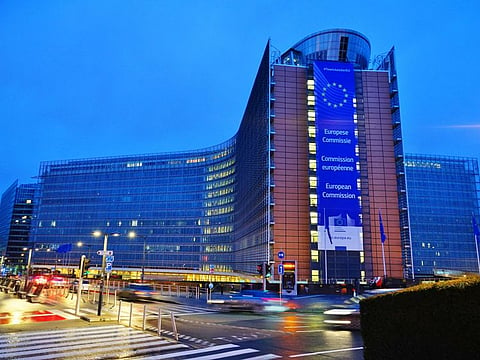The EU won’t change course on Brexit – look at the Greek debt crisis
British bickering goes on but that doesn’t make the EU likely to reopen the deal

The UK’s Brexit debate has restarted after a 10-day break just as before, only with a new end date of October 31. Brexiteers continue to press for the Irish backstop to be replaced with alternative arrangements, while the government and the Labour front bench seem to be making little progress in finding a consensus position.
But once again, scant attention is being paid to the other side of the negotiating table. If we look more closely there, we find hardening attitudes across the EU to anything other than the UK leaving on the basis of the withdrawal agreement, regardless of the flaws that have seen this rejected three times by parliament. Just as with the Greek debt crisis, the EU now wants to see proposals adopted, direction set and to deal with the problems later.
This view is laid out bluntly in the European Council conclusions granting the UK an extension: “This extension excludes any reopening of the withdrawal agreement,” it says, in no uncertain terms. That means no change to the Irish backstop, which has been a clear EU red line for some time, but is for the first time laid out here with legal clarity. Any new claims that the EU will replace the backstop with text on alternative arrangements should therefore be treated with extreme scepticism, the EU having gone with the view of the vast majority of customs experts that relying on technology, instead of alignment of tariffs and goods regulations, is not a feasible solution for an international border.
This also has impact beyond the Irish border issue: even if the government and opposition agree a position on the future relationship, such as a customs union, this cannot be reflected in the legally binding withdrawal agreement, only in the aspirational political declaration. This has given rise to understandable concerns on the Labour side that any commitments they secure could be undone by a future government.
Further extension?
European Commission negotiators are well aware that refusing to reopen the withdrawal agreement hinders cross-party talks, but are not in much of a mood to help. The German foreign minister, Heiko Maas, reinforced the uncompromising message in a pre-Easter interview when he said: “They will have to decide what they want by October, you cannot drag out Brexit for a decade.” While a further extension may be possible, that is a far cry from the situation in March and early April where we could be relatively certain of an extension.
Granting the extension until the end of October while sticking to the letter of the withdrawal agreement also has the effect of making the date by which we have agreed future arrangements should be resolved even less realistic. At the moment, the transition period expires at the end of 2020, with an extension of up to two years to be agreed before July 1, 2020. Detailed rules for implementing the Irish backstop are also supposed to be agreed by July 2020. The EU is not a quick negotiator and there is little reason to believe a future relationship can be agreed in even three years, or detailed trading rules in eight months.
For the sake of comparison, trade talks between the EU and Canada took seven years to reach agreement. EU-Japan negotiations were quicker, taking just over four years. The UK-EU relationship is likely to have greater complications than either of these, and most trade experts believe five to 10 years is a reasonable timeframe.
EU institutions forcing a country to accept a deal that they know cannot be properly implemented is not unprecedented. Comparisons between Brexit and the Greek financial crisis have been made frequently, but on this occasion, look very accurate. In his book Adults in the Room, the former Greek finance minister Yanis Varoufakis details how he failed to persuade the EU, IMF and other institutions of his revised proposals for Greek debt in 2015, even when many privately agreed with him. The bureaucratic inertia was simply too great, particularly given the bad faith engendered by previous negotiations, and the formidable power of EU negotiators.
Many in the EU recognise the problems with the withdrawal agreement: that it doesn’t set out a clear path or timescales for the future relationship, that the Irish backstop blurs the distinction between settling divorce issues and the future relationship, and that it does not settle specific issues such as fishing or Gibraltar. All this means it looks unlikely to produce a stable Brexit outcome anytime soon. However, they have run out of patience to try to resolve these issues, given the current UK political climate. The endless futile debate on the Irish backstop has led to them closing the whole agreement. Perhaps signs of an emerging realistic UK consensus could persuade them to reopen negotiations, but more likely as we get towards the end of October the choice will be reduced to no deal, no Brexit, or a flawed agreement.
March was the drill, October now looks like the real decision point.
— Guardian News & Media Ltd
David Henig is director of the UK Trade Policy Project at the European Centre for International Political Economy (ECIPE)
Sign up for the Daily Briefing
Get the latest news and updates straight to your inbox



